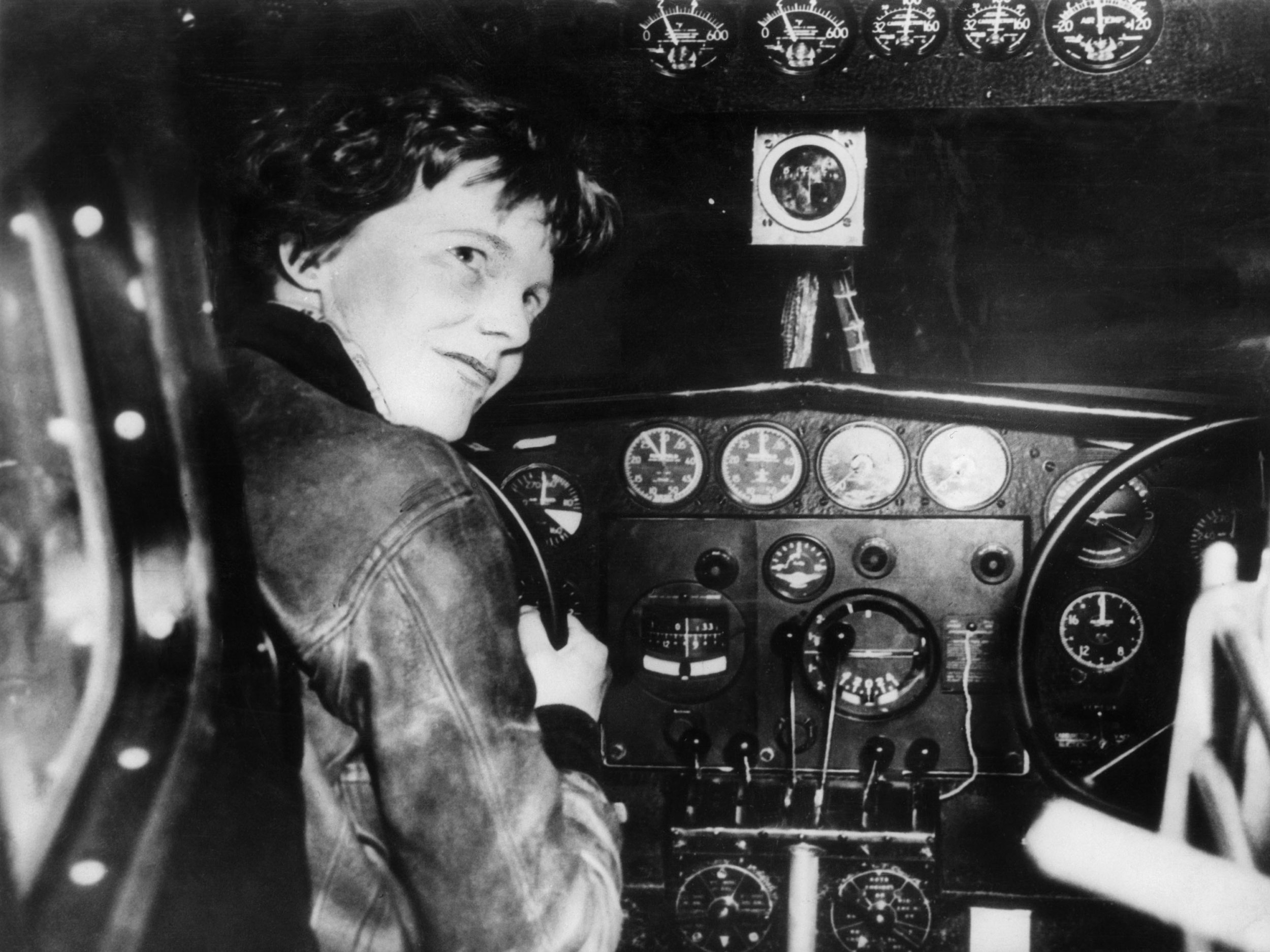
An expedition to search for the remains of Amelia Earhart is set to begin on Saturday, and archaeologist Fred Hiebert says they are hopeful human bones will be found.
Earhart and her co-pilot Fred Noonan went missing on July 2, 1937. They were on their way to Howland Island in the South Pacific as part of an attempt to fly around the world when their radio systems failed and they got lost.
The plane disappeared, ushering in one of the biggest aviation mysteries of the last century.
"Amelia Earhart caught the attention of the early age of air exploration," Hiebert tells Newsweek. "She was stylish, headstrong and full of enthusiasm in a post-Depression and pre-World War II era that needed real heroes, not just ones from the movies. President Herbert Hoover even awarded Earhart the National Geographic Society's Special Medal for being the first woman to make a solo transatlantic crossing."
"Her mystery disappearance," Hiebert adds, "remains one of the world's greatest 'missing person's files,' primarily due to her hero status. There is hardly a year where there is not some search, somewhere, based on widely different clues."
The U.S. government concluded Earhart and Noonan died at sea after their plane crashed into the ocean. But there are many other theories about what happened to them. One of the most plausible is that the pair continued on the flight path they had been following and crash landed on the uninhabited island of Nikumaroro after running out of fuel.
It's this theory on which a new expedition to search for Earhart and Noonan's remains is based. Tom King, a senior archaeologist with the International Group for Historic Aircraft Recovery (TIGHAR), put forward the proposal in his book Amelia Earhart's Shoes.
"In the book, King outlined a castaway camp on the Island of Nikumaroro that contained various fragments of European glass and metal, as well as bones scavenged from what few animals and fish existed on the island," Hiebert explains. "This castaway site is likely the site where some bones of a human body were found in 1940, taken to a forensic lab in Fiji to be measured, and ultimately lost during World War II."

Researchers with TIGHAR and the National Geographic Society will take four forensic dogs to the island to search for any remaining bones. "We expect that the remaining bones should still be on the island, some likely hidden below the sandy subsurface," Hiebert says. "The bones buried below the sand are the ones that we are most interested in, as the surrounding matrix would preserve the decomposition chemicals that the forensic dogs alert on."
"The forensic dogs we're working with are exceptionally accurate at alerting on human decomposition chemicals," says Hiebert. "They have nosed out burial sites as deep as 9 feet and as old as 1,500 years. This island is also known for a species of crabs that bury things underground. For me, the percentage chance of having the dogs find human bones comes down to the effectiveness of the crabs to bury scavenged remains. If our odds of finding human remains are at 20 percent, I would be ecstatic."
Should the team find human bones, they will be able to carry out tests on them to work out whether they belong to Earhart or Noonan.
"Ancient DNA testing has advanced incredibly in the last 20 years," Hiebert continues. "Today it's not unusual to read reports of bones and teeth dating back 10,000 years to provide accurate DNA results, and human DNA (from the decomposition chemicals) has been detected from microscopic samples of soil from archaeological sites. Luckily for us, DNA specialists consider anything not living to be ancient—including these samples—and a state of the art ancient DNA lab is anxiously awaiting any samples we might find. They will be able to compare these to DNA samples from Earhart's family."
Uncommon Knowledge
Newsweek is committed to challenging conventional wisdom and finding connections in the search for common ground.
Newsweek is committed to challenging conventional wisdom and finding connections in the search for common ground.
About the writer
Hannah Osborne is Nesweek's Science Editor, based in London, UK. Hannah joined Newsweek in 2017 from IBTimes UK. She is ... Read more
To read how Newsweek uses AI as a newsroom tool, Click here.








